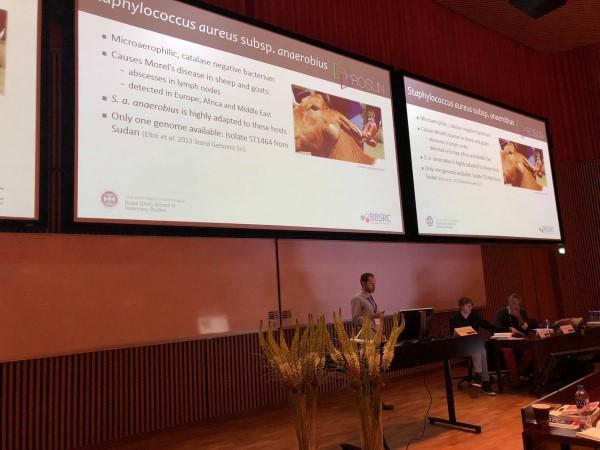LBEP contribution to ISSSI 2018
LBEP contribution to ISSSI 2018 in Copenhagen

Part of the LBEP team travelled to Copenhagen, Denmark, to attend the 18th International Symposium on Staphylococci and Staphylococcal Infections (ISSSI) (23-26 August).
Gonzalo had the opportunity to present his latest results with a talk entitled "Massive gene decay and insertion sequence acquisition has shaped the evolutionary history of the host restricted Staphylococcus aureus subsp. anaerobius".
Staphylococcus aureus subsp. anaerobius is the aetiological agent of Morel’s disease in sheep and goats, which causes very specific abscesses in lymph nodes. This bacteria only grows in microaerophilic conditions and is unable to infect other hosts. We sequenced the genomes of a collection of isolates from several countries and aimed to examine its evolutionary history and to understand the molecular basis of its host adaptation and restricted metabolism by using phylogenetics and population genomics.
From our analyses we’ve learnt that S. anaerobius evolved from within the S. aureus diversity, and that it shows a highly conserved genome with limited accessory genome. This bacterium emerged at least a thousand years ago but has had a very constrained population size. But the most interesting aspect of is how the host adaptation process has dramatically changed the S. anaerobius genome, producing: 1) a massive gene decay through pseudogenisation, 2) gene expression modulation mediated by insertion sequences, and 3) an important chromosomal rearrangement caused by large inversions. Some of these phenomena had been previously observed in distantly related bacteria such as Yersinia or Mycobacterium but never in the context of Staphylococci, which is why we think that S. anaerobius represents a remarkable example of drastic genomic changes cause by niche adaptation.

